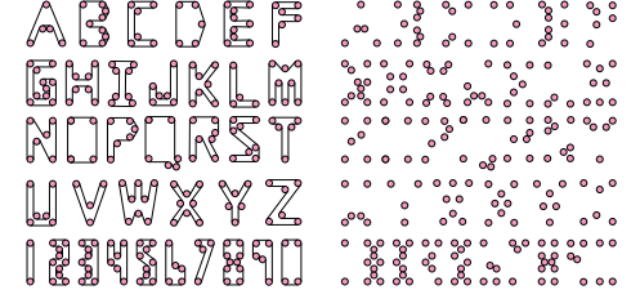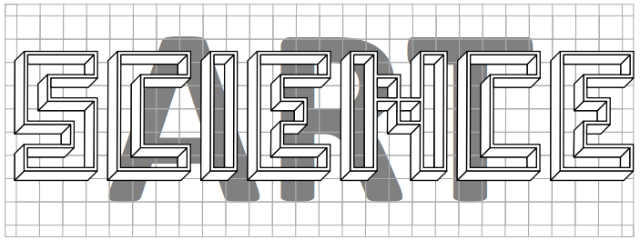When quickly sending an email, creating a company logo, or writing a post about mathematical typefaces, hundreds of thousands of fonts exist to help express a specific mood or feeling though we rarely escape the realm of a well-known few. Although it’s well-documented that creating fonts can be an art, two mathematicians show that it can also be a science.
But these collection of letters aren’t your typical typefaces, they’re really small puzzles themselves. During the past decade, father-son duo Erik and Martin Demaine, both mathematicians at MIT, designed five typefaces based on theorems and computational geometry. These fonts stand as fun examples of five distinct topics in maths and science, which are “hinged dissections, geometric tours, origami design, physical simulation, and protein folding,” according to their recent research paper (that is a pretty fun read).
The duo describes their creations as “mathematical typefaces” and “algorithmic typefaces.” The idea is that the very process of decoding what the letters exemplify the maths and science they’re trying to explain. Their first font in developed in 2003 examines hinged dissections, a theory recently proven (by the Demaines in 2008) that says any polygon with equal area can transform into different shapes while remaining connected through hinged points.

All the above letters and numbers share the same surface area and can be cut into 128 hinged isosceles triangles (pictured on the right). Using hinged dissection means any of these glyphs could take the shape of any other or simply form a 4×4 square. If I lost you from the very beginning, this paper gives a pretty good explainer on how this radical alphabet works.
Another font, highlighted by Science News, tackles a question posed by mathematician Manual Abellanas in 2001: Can a 2D conveyor belt can stretch around X number of gears without crossing itself? With simple figures and low gear-counts, the answer is clearly “yes duh,” but as the figures get more complicated, it gets a little bit tougher to say. Although it remains an open question, Erik developed a font exemplifying Abellanas’ head-scratcher.

And even though they help explain and elucidate long-standing mathematics questions, these fonts horrendously fail at being adequate conveyors of language, but they completely succeed at illustrating complicated mathematics — when sometimes even the written word can fail us. [Science News]
Picture: Erik Demaine and Mark Demain, titled “Science/Art”. It’s an example of an Origami Maze font. You can read about this font and any of the others at Erik Demaine’s website
